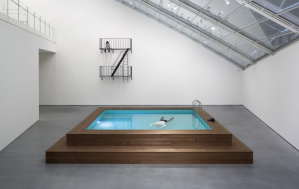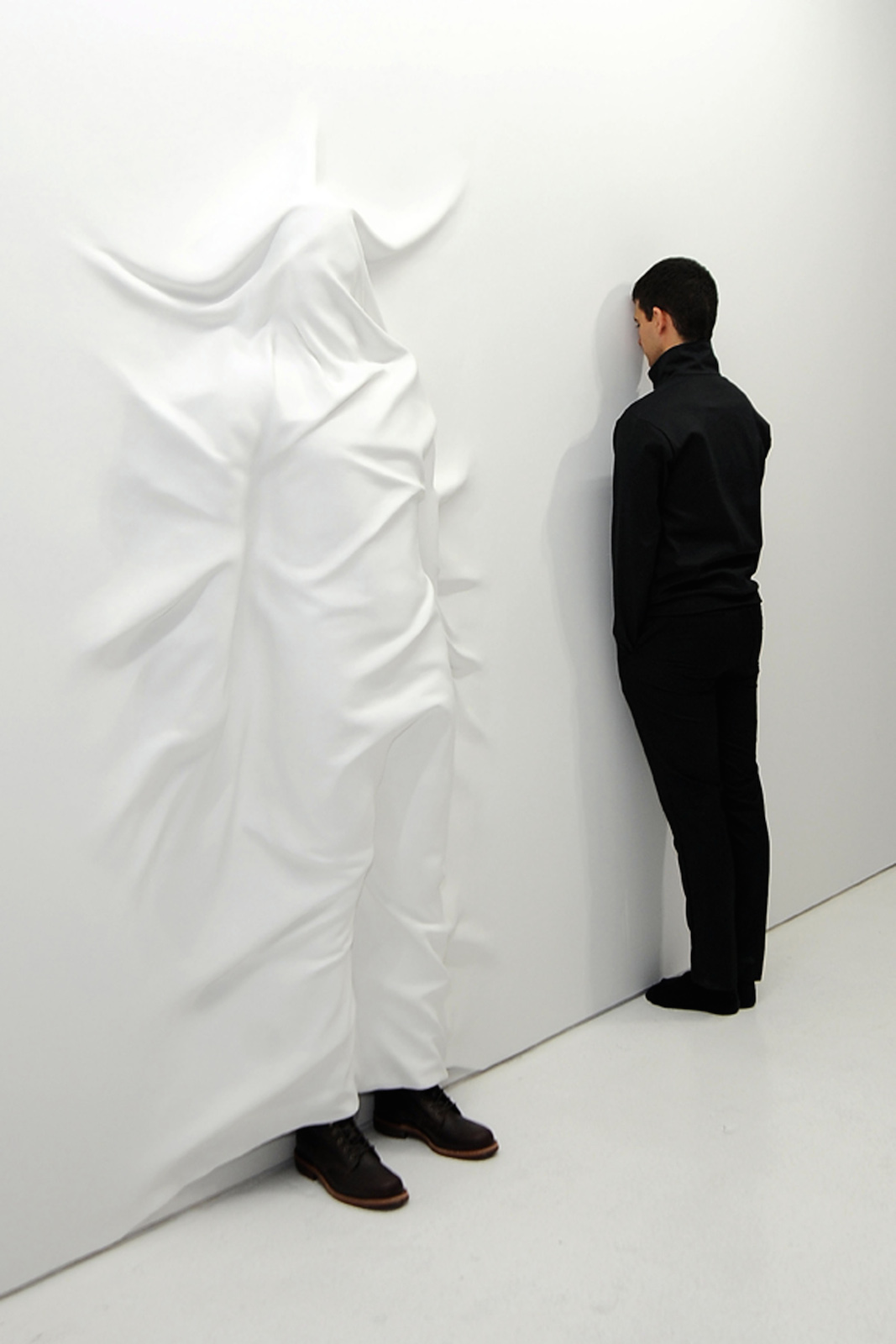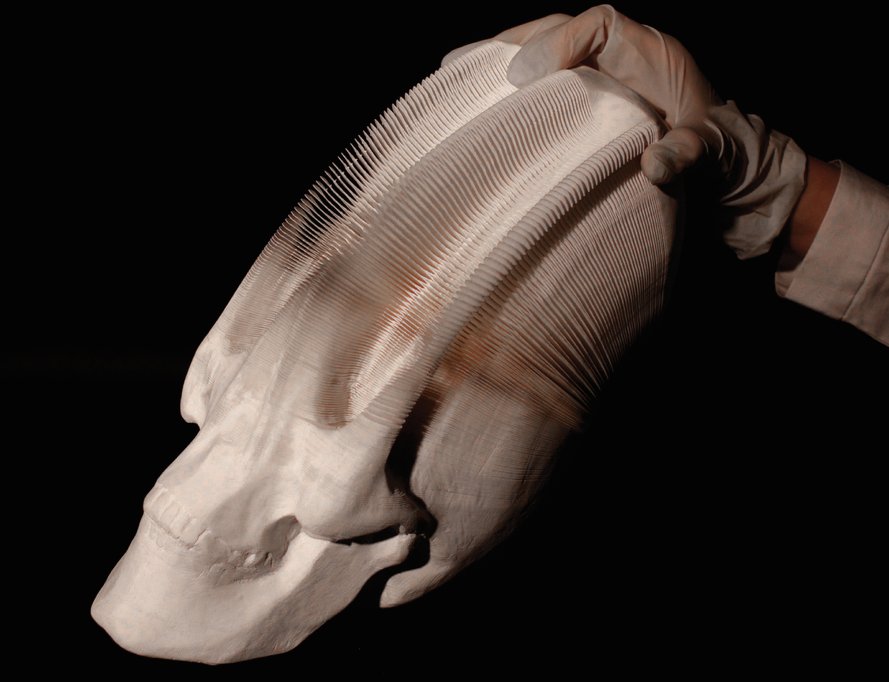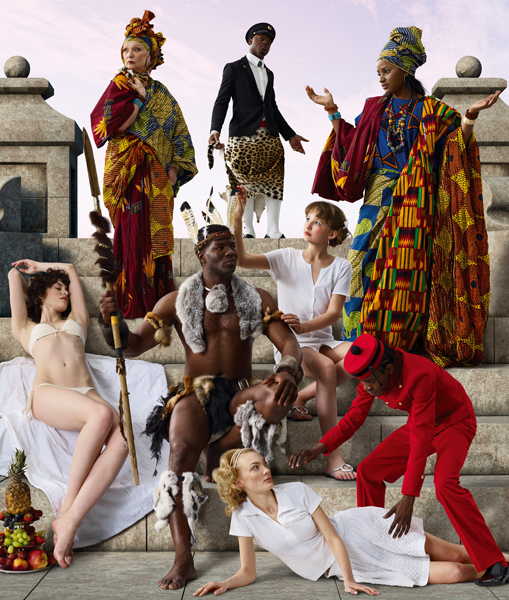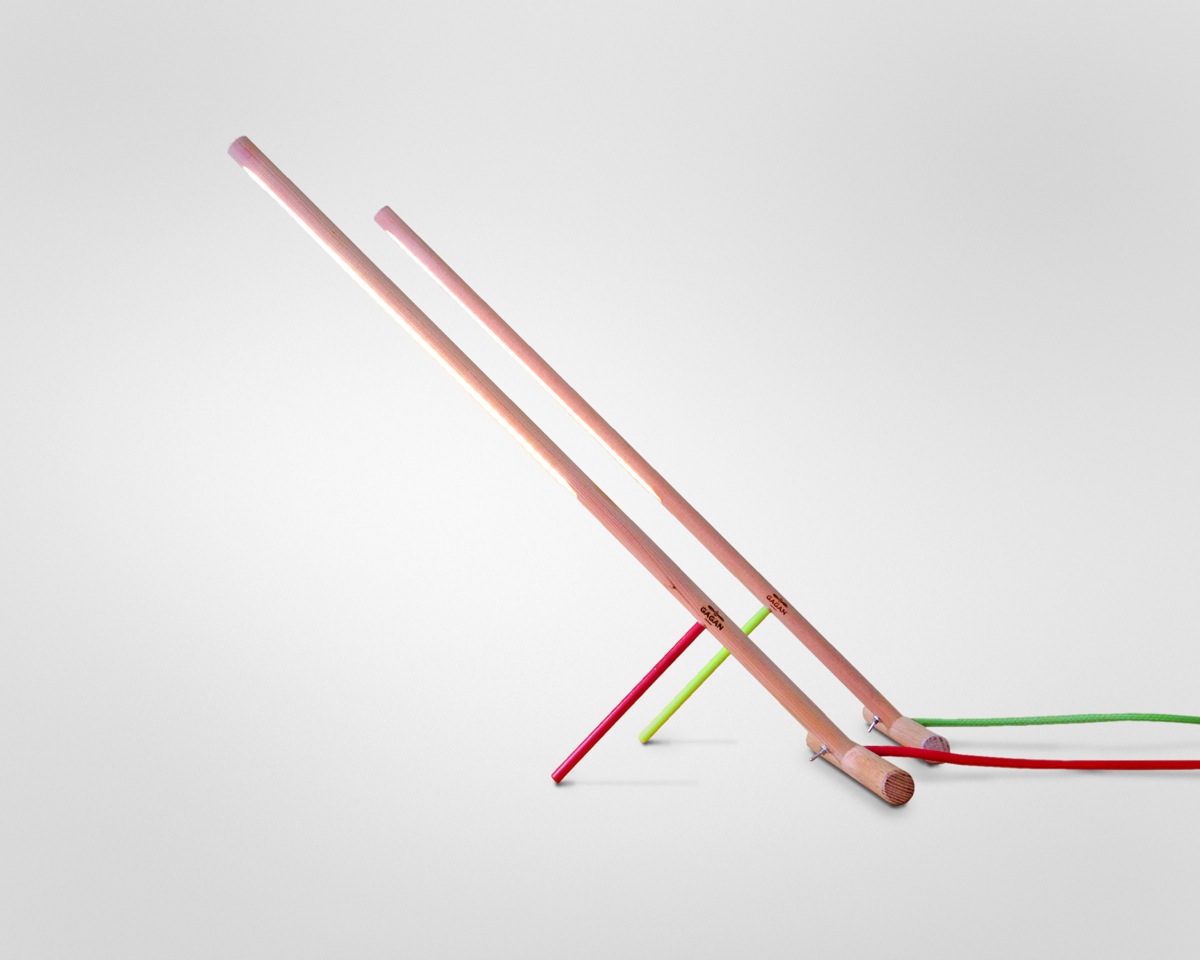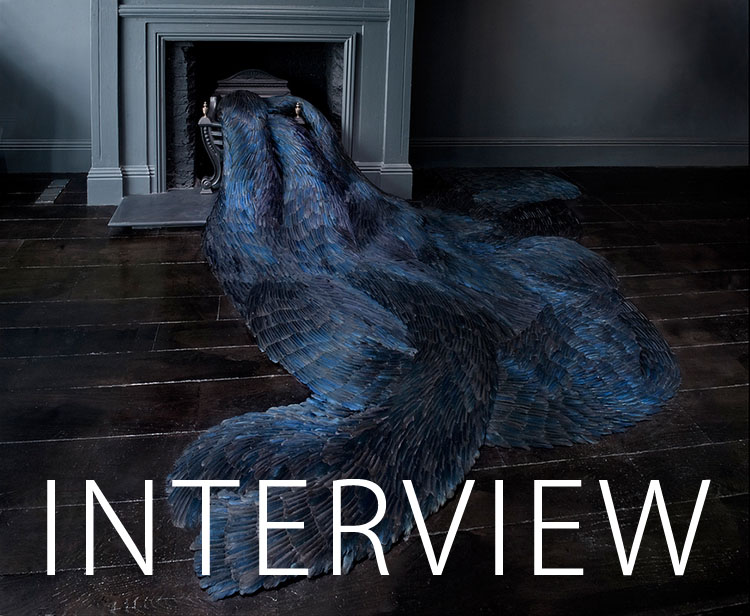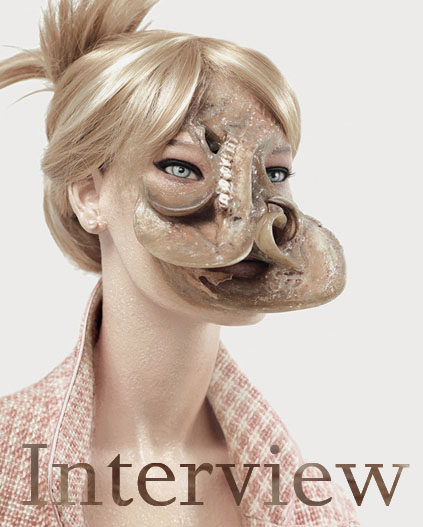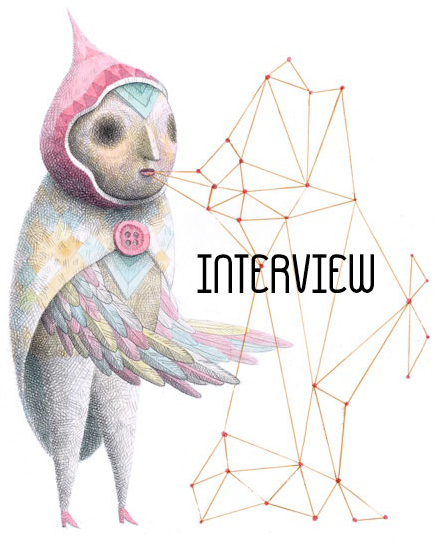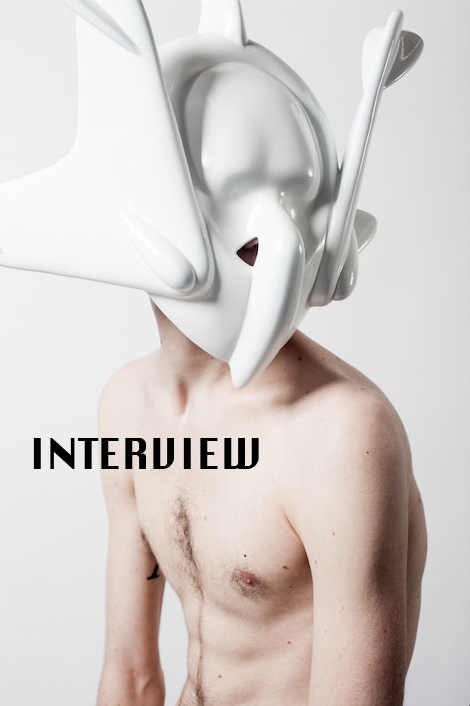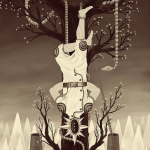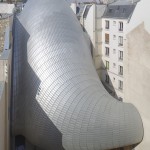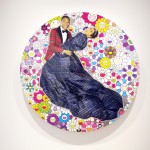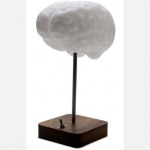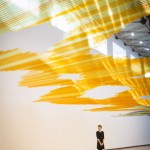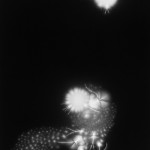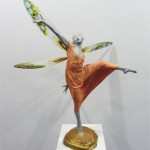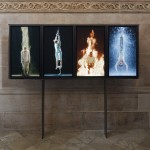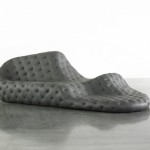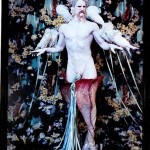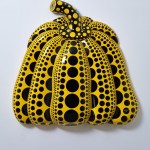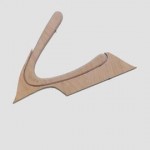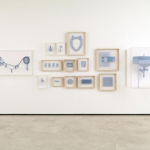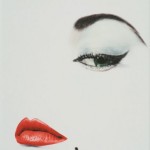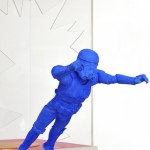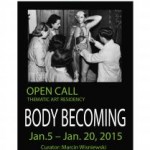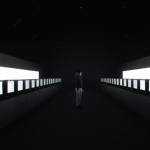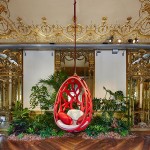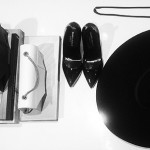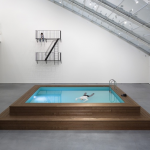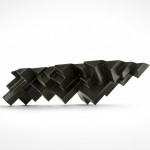INHALE is a cultural platform where artists are presented, where great projects are given credit and readers find inspiration. Think about Inhale as if it were a map: we can help you discover which are the must-see events all over the world, what is happening now in the artistic and cultural world as well as guide you through the latest designers’ products. Inhale interconnects domains that you are interested in, so that you will know all the events, places, galleries, studios that are a must-see. We have a 360 degree overview on art and culture and a passion to share.

A written interview with Alexandra Pirici
by Alexandra Pâzgu
Imagetanz – a dance, coreography and performance festival is taking place yearly at Brut Vienna http://www.brut-wien.at/brutproduktion/aktuell/en/
This year’s festival was curated by Katalin Erdödi and included under the umbrella of Care the the premiere of the ongoing action: „Delicate Instruments Handled With Care”, concept by Alexandra Pirici, with Manuel Pelmuş, Mădălina Dan, Mihai Mihalcea and Alexnadra Pirici, lights and photo documentation by Andrei Dinu.
The performance was presented in the last three days of the festival (20,21,22 March) and was followed by a closing party, where Pirici also performed as a musician with her stage name: Adda Kaleh https://soundcloud.com/ama-diver
Alexandra Pirici and Manuel Pelmuş represented Romania at the 55th edition of the Venice with the ongoing action “An Immaterial Retrospective of the Venice Biennale”. In 2014 she has been commissioned for a new work for the Public Programm of Manifesta 10.
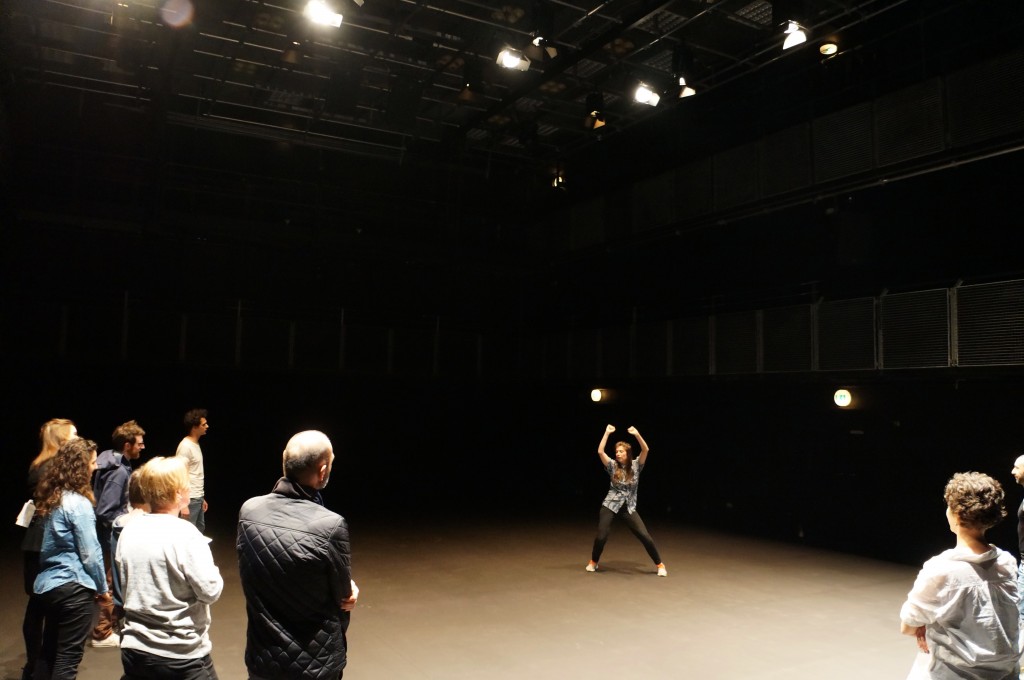
Alexandra Pirici – “Delicate instruments handled with care”, enactment of Beyonce’s Drunk in Love video
After viewing and participating in the performance, I thought that the best way to vizualise what happened, was to have a written interview with Alexandra Pirici, the one who proposed the concept and coordinated the performance.
Public
Q: On a formal level, we may say that the public is deciding the dramaturgy of the performance by choosing a title/theme that they would like to see. I say formal, but maybe I should better use “conceptual”- implying that the public’s choice is a validation of the reenactment, re-creating the political situation that allows “iconic moments” to exist. How would you define the public’s role in the whole event- on a conceptual and physical level? (To what degree is the public’s participation a physical influence on the act of performing?)
Alexandra: The work was created for the context of Imagetanz festival in brut, Vienna and the curatorial frame had to do with “care” so I was also thinking of how to respond to the frame. The fact that the audience “orders” or chooses what they like to see has layered potentialities, for me. I do want them to feel “cared for” and entertained (I don’t shy away from the word, I find the concept of “counterculture” slightly dated) and I do want us, as performers, to make ourselves available for their requests. It also has to do with a more contemporary dynamic of accessing information, one that is more related to an internet-like dynamic (where you’re more encouraged to search for things) than to the general convention of theatre performance or older media in which you are assigned a more passive role. And of course I also think of this situation as potentially subversive, in regard to the power relations that implicitly arise – how the public understands this contract – and how the situation plays on the public, what is remembered and what not, how expectations get fulfilled or not. On a physical level I also like the fact that we merge with the audience, that things are sometimes very fragile and if you haven’t been following you can’t really tell if that person next to you is actually performing something or is just part of the audience. I also think not so many proposals consider how the given structure of the theatre space constructs a specific subjectivity and encourages you to conform. People are seated all together, the lights go off and that’s it, you have to watch what you are being presented until the end (so you must be seduced into that), if you would actually like to go out it looks like you make a strong statement against the play, you stand up, you bother everybody, you draw attention to yourself. I wanted a frame that would be as open as possible – I tried to reduce the given structure of the theatre space to the minimum, there are no tribunes, people can move as they like and can come and go as they please. And of course, if there is no audience to ask for enactments, the work doesn’t exist.
Q.: Did the public react in the way you expected to your proposals? Did you have any big surprises?
Alexandra: I think people react differently, for some it’s very easy to ask for things, others prefer to observe. Either way, you get something. There was only one person who actually tried to “compose” with the enactments we had to offer and asked for two in a row. I thought this would happen more but since it’s not pointed out that you can do that, maybe you don’t think that you can. We are also trying to work with the situations that arise and make the most out of them so I think it’s nice when some things happen simultaneously and different readings are created in the mix. There was this one moment when someone was performing Bolivian president Evo Morales shining the shoes of someone and another performer was delivering Bill Clinton’s apology to the nation speech – for his relationship with Monica Lewinsky, and that was a nice coincidence, for example.
Then thinking of what this kind of dynamic produces and what it can reveal, the audience “ordering” things, there was also this situation during the last night, I enact a Beyonce video, it’s probably one of the most “entertaining” enactments and some people came especially to ask for that. I performed it a few times but then towards the end I refused to perform it anymore and someone got frustrated and asked why can’t they see it if it’s on the list, was it because I was tired? And I said “yes” and I was very tired and felt like I was entitled to say no, especially for that particular enactment. It ended there but I think that’s when it started to get interesting J – just to clarify the context, the work has three hours to be experienced and we programmed it for three days in a row. And we also play with these expectations, some moments can actually deliver, from a “spectacular” point of view, others totally don’t and I like that mix.
Irony
Q.: The proposal of embodying “iconic moments” from the western collective memory is also a claim for a common ground, an agreement, of what is iconic. However, its realization is depending on your own bodies and identities – which rely on subjectivity. I felt that your proposals have been mainly guided by irony. What would you say on this topic? Did you consciously and programmatically use this concept, or is it something that turned out that way?
Alexandra: As a start, we didn’t want to perform iconic moments from western collective memory but indeed, most of the situations belong to the western culture. I was aware of that and I didn’t really try to look for a balance because in a way this is also relevant, the reality of our common, westernized memory, it would have made no sense to try and correct it. Most of the things that came to our minds belonged to the western culture and I think this is beyond critique – it might be more interesting to think of why is that or how western culture had the ability to capture a lot that was non-western. But there are quite a few proposals that are different also and you can spot them on the list.
As for the irony: I think enactment is an implicit ironic commentary, to some extent. In extension to the collaboration with Manuel Pelmus for the Venice biennale, the focus here shifted on performative situations – as the context was also different, the theatre space is dominated by a very different history and function. I was more interested in bringing real-life actions and situations in the theatre context and see how this frames them, what it reveals about them, how it deconstructs them. And irony played an important part, of course, for me, when smartly done, it’s an important critical tool.
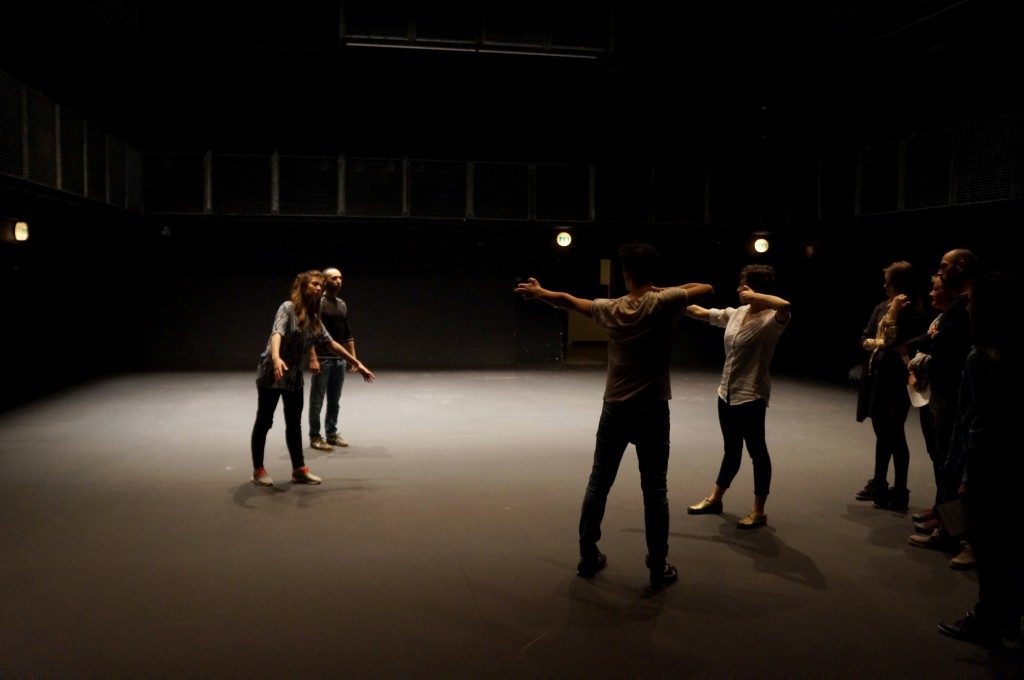
Alexandra Pirici, “Delicate Instruments handled with care”, enactment of Osama Bin Laden’s killing”.
Q.: Do you find irony an inspiring concept? What are its flaws and its gains? Do you use it in your practice? If yes, how? Please give examples.
Alexandra: Yes, I find irony a very inspiring concept. As I said, I think it has a great critical potential when performed intelligently and I do try to use it in my practice. For some moments of the work in brut it might have been too much but I think you also need this shifting between more subtle and more obvious choices.
I am interested in detournement and overidentification, as strategies. The first intervention I did in public space was in 2010, I think, and I proposed an enactment/ embodiment of “Caragialiana”, this horrendous and very expensive figurative statuary group in front of the National Theatre in Bucharest. Public monuments and monumental art seemed to be the only legitimate and supported art form so we claimed to be doing the same thing. And of course, the difference in scale and the gap between the image created by our living bodies trying to mimic the construction and the construction itself produced something interesting, ironic and critical, in my opinion, without being a direct and obvious attack.
The drawbacks are the same as always: our subjective readings of everything. What I find subtle and ironic someone else might find totally boring. We’ll have to live with that – and of course, to try and make things as accessible as we can and to better understand what we produce.
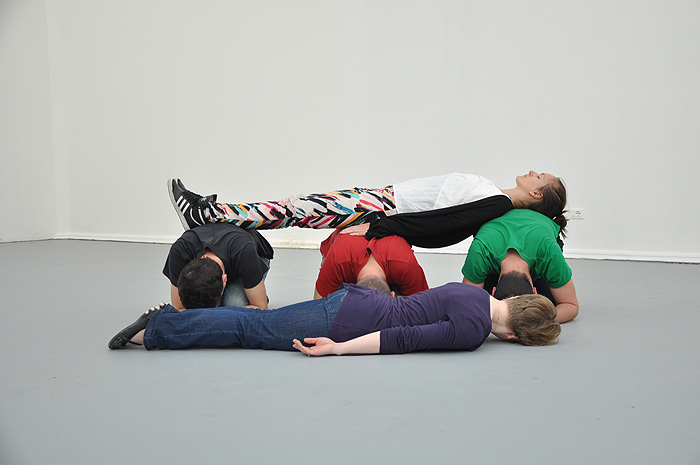
Alexandra Pirici & Manuel Pelmus, “An Immaterial Retrospective of the Venice Biennale, enactment of Joseph Beuys, “Tramstop. A Monument to the Future”
Critical thinking
Q.: A friend asked me in what way is your performance relevant to critical thinking. I answered without hesitation: it is relevant because it transforms the body in a critical tool of questioning the collective imagination. (Do you agree? Why? Why not?); or do you rather link this performance (and your practice, if you want) to a sort of institutional critique that reaffirms the body as a valid subjectivity, a tool of deconstruction?!
Alexandra: I agree with both readings, I am not keen to correct or re-enforce any of them.
Performance Art and political representation
Q.: How far is the project a questioning or a critique of the capitalist society and the commodification of images?
Alexandra: To be totally honest, framing your work as “political” or critical of the capitalist society became such an easy thing to do, like taking shelter under an umbrella that could cover any lack of thought or actual conceptual work. It can be both ineffective and easy to appropriate. The work of the likes of Hans Haacke is very rare, mostly I come across very blunt and dry statements so, depending on the context, I sometimes refrain from emphasizing on this. But I think I can point out a thread of thought in relation to your question: I have the feeling that you can reclaim reality (of your body) over the simulacra through this conscious enactment of models or images that construct the fabric of our lives, our hyper reality. I think there is some potential there, when you see the human performing the simulation, the imperfection interferes with your projection of what it should be and how you knew it looked like from your mediated experience of that “object”. I think that could be an interesting area of research.
Q: What is your favorite point/scene/theme: why?
Alexandra: I wouldn’t name one – we all brought in material and I think all stuff is interesting from one point of view or another.
Duration
Q.: Are duration and the inherent repetition of specific themes contributing to your idea of how a theme/subject should be performed? I mean, taking into consideration the fact that you will be performing in Bucharest in June, do you consider changing some scenes?
Alexandra: I think some enactments will be different, for the first “free national television broadcast during the Romanian Revolution of 1989” I was translating in real-time to the audience (as the performers were speaking in Romanian) and of course this makes for a different experience but I think both (the mediated/translated one in a foreign country and the un-mediated one in Romania) are valid. As for the repetition: I am looking for potential directions to develop within this practice of enactment, different threads to follow and a better understanding of what it could produce under different circumstances so in that sense I think the work is still in process but also on a more general level, not only referring to this particular piece.
Collaboration
Q.: Is there a way in which you would define your collaboration? What did you discover about each other? What would be worth developing in future projects?
Alexandra: We had a lot of fun. And it was interesting to see what each of us remembered or believed to be relevant, in one way or another, about our experience with “culture” at large. Of course it’s not a comprehensive overview and I would point out a work a like a lot and I would use as a reference – Peter Fischli and David Weiss’s “Suddenly this overview”. I love the low-key and the apparent, misleading “superficiality” of it that made for one of the most amusing yet touching experiences of an artwork.
Inspiration
Q: What would you say is your source of inspiration at the moment? (Perhaps you could name some artists, books, cities, places, words, concepts etc.)
Alexandra: I can’t do that, for everything I name there are so many other names that I forget that it makes it really frustrating afterwards.
Theory in Praxis
Q.: What is the question that would best describe your practice and your interest in art?
Alexandra: I make work for the theatre space more and more rarely and most of the future projects will happen in visual arts contexts. So at the moment, since I’m not so fond of self-precarization and the recent interest (from big visual art institutions) in performance/live art as a mere “event” and cheap advertisement within the economy of attention, the “question of the day” would be: can we work a decent budget? So besides the artistic points, I’m also interested in art as a way to make a living – and talking about that should not make you less interested in your art. This is a common exploitation strategy, I was once told I should work for free if I actually loved what I do. The body is not “cheap” and is not subverting the objected-oriented art market by not getting paid.
Thank you.
Alexandra Pâzgu for Inhalemag 02.04.2014


